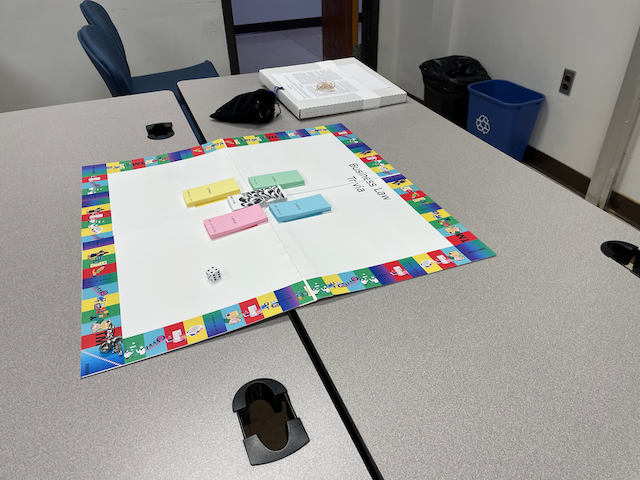I attended a session at the Teaching Online Professor Conference in 2023 on integrating games as a teaching technique for students. The presenter at the conference was an adjunct that taught Typography, and he described how he had transformed a classroom of student “hostages” into a classroom of fully engaged students by his use of various gaming activities in the classroom. One of the resources the instructor referred to, Rob Plevin “The Fun Teacher’s Tool Kit” (2017), suggested adapting known games for the learning environment and content.
My own research on using games as a teaching technique suggests that students can be more actively engaged by such activities, and that as a result, students may retain more information and knowledge from the course. Van der Linden, et al., discussed the implementation of an educational game on Newtonian mechanics, and that using a pre- to post-test evaluation method, found a large significant learning effect for students exposed to the treatment (n=27). That evaluation found that students scored significantly higher (p=0.002) from a mean of 2.89 / 5 for the pre-test, and a mean of 3.93 / 5 for the post-test after exposure to the game. Wang and Tahir studied the effectiveness of using Kahoot! in the classroom in a 2020 meta-study of 93 studies on Kahoot!, finding a positive effect on learning performance (Wang & Tahir, 2020).
I therefore embarked to develop a “Trivial Pursuit”-style board game to use for review of course content in MNGT 140 Business Law I, that I could utilize in my in-person class sessions. I designed a 24”x24” board game that I printed and assembled, trivia cards by topic within a particular unit, wild cards that would randomly alter game play, and play instructions for students to play in groups of 2-4 players. Each player navigates clockwise around the board, answering questions from the color-coordinating stack based on where the student lands on the game board. Correct answers earn the player coins. Whoever has earned the most coins by the end of the game (when the first player returns to the starting square on the board), wins.

Generative AI was utilized to develop the content for this game, based on the Open Educational Resource (OER) textbook, where multiple choice questions by topic were exported to an MS Excel spreadsheet, which was used with MS Word as the data source for a mail merge document with the question on one side of a ten-up card layout, and a backer on the other side to indicate the card set. These merged documents were then printed on double-sided card stock in one of four colors to match the different colors on the game board for landing squares.
I used this game in several in-person sections of Business Law I during the 2024 and spring 2025 semesters. I then examined the impact of this game on student Unit 1 exam scores, with fifty students exposed to the treatment who then took the exam, compared with 253 control units in other sections of the course not exposed to the treatment. I found that the median unit 1 exam score for students exposed to the treatment was 66%, where the median score in the control group was 63%, suggesting a small improvement in student performance, meriting further research on whether the treatment was a significant cause of this improvement.
Works Cited
van der Linden, A., et al. (2023). “Implementing an intrinsically integrated game on Newtonian mechanics in the classroom: outcomes in terms of conceptual understanding and transfer.” aRxiv.org: https://arxiv.org/pdf/2307.01714
Plevin, R. (2017). “The Fun Teacher’s Tool Kit: Hundreds of Ways to Create a Positive Classroom Environment & Make Learning Fun”
Wang, A. & Tahir, R. (2020). “The effect of using Kahoot! for learning – A literature review” Computers & Education vol. 149.https://doi.org/10.1016/j.compedu.2020.103818.